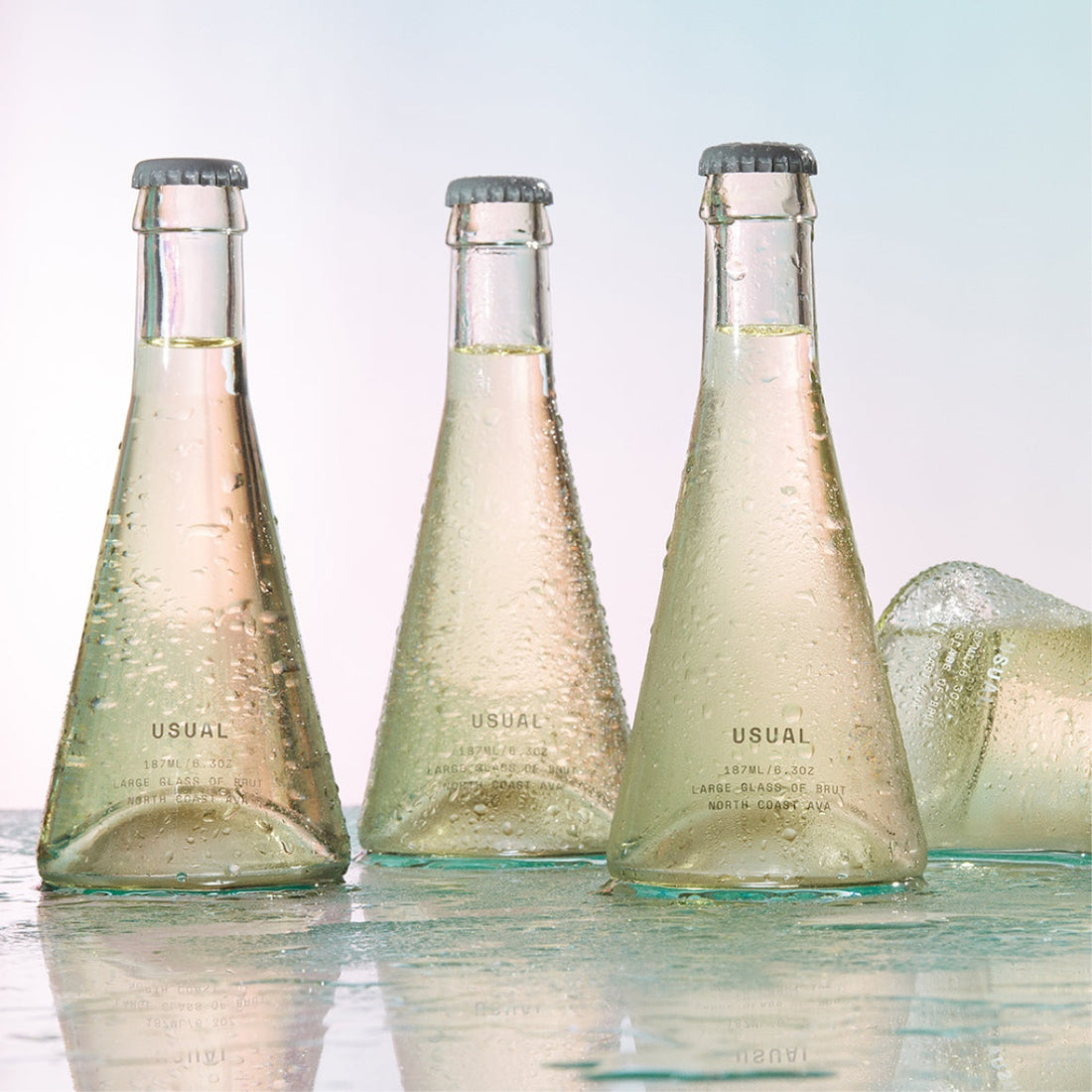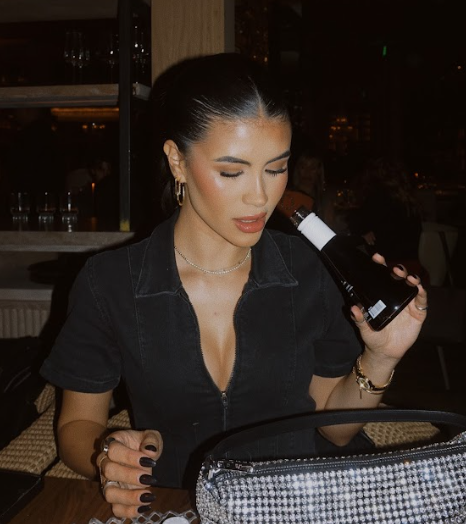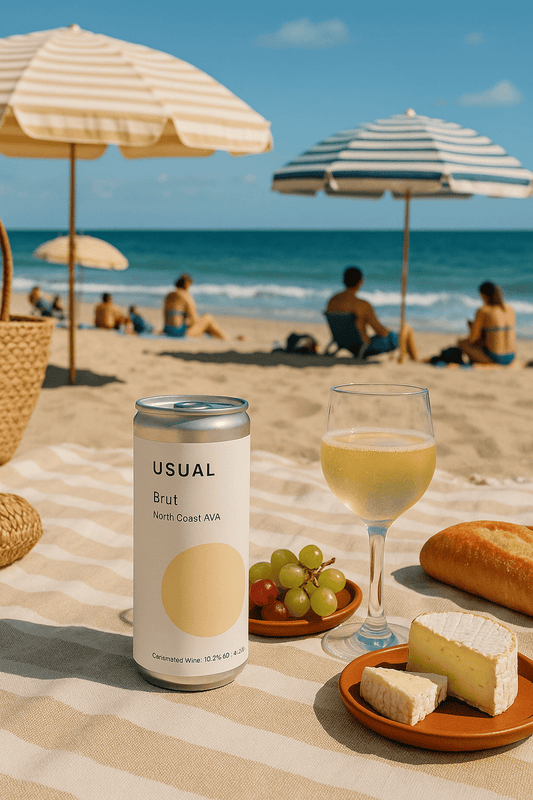
Champagne 101: Understanding the Different Types and Sweetness Levels
Matt CoenenChampagne isn’t just for toasts — it’s a diverse and complex category of sparkling wine, offering a range of styles and sweetness levels to suit different tastes and occasions. From crisp and dry Brut to the lusciously sweet Doux, each variation has its own distinct character, shaped by grape varieties, winemaking techniques and the level of added sweetness.
Whether you're choosing a bottle for a celebration, pairing it with a meal or simply looking to enjoy a glass on a quiet evening, understanding Champagne’s different types can help you make the perfect choice. In this guide, we’ll walk you through the key styles, the different sweetness levels and how to enjoy Champagne to its fullest.
The Basics of Champagne
Champagne is a sparkling wine produced exclusively in the Champagne region of France, following strict regulations to ensure quality and authenticity. What sets it apart from other sparkling wines, such as Prosecco or Cava, is the traditional method (Méthode Champenoise) — a labor-intensive process that gives Champagne its signature fine bubbles and complex flavors.
Key Grapes Used in Champagne
Champagne is primarily made from three grape varieties, each contributing unique characteristics:
-
Chardonnay: Adds elegance, citrus notes and aging potential.
-
Pinot Noir: Brings body, structure and red fruit flavors.
-
Pinot Meunier: Offers a fruitier, rounder profile with floral and earthy undertones.
The secondary fermentation in the bottle is what creates Champagne’s iconic bubbles. Yeast and sugar are added to the base wine, producing carbon dioxide and imparting depth of flavor. The wine is then aged on the lees (spent yeast cells), enhancing texture and complexity.
Types of Champagne by Style
Not all Champagne is the same. While all share the signature effervescence, they can vary greatly in composition, taste and even color.
1. Blanc de Blancs
-
Made exclusively from Chardonnay grapes.
-
Known for its crisp acidity, citrus notes and refined elegance.
-
Pairs well with oysters, seafood and light appetizers.
2. Blanc de Noirs
-
Made from Pinot Noir and/or Pinot Meunier (black-skinned grapes, but without skin contact).
-
Typically fuller-bodied, rich and fruit-forward, with notes of berries and brioche.
-
A great match for roasted meats, truffle dishes and aged cheeses.
3. Rosé Champagne
-
It can be made in two ways: the blending method (mixing red and white wines) or the saignée method (allowing brief skin contact to extract color and flavor).
-
It offers red berry notes, floral hints, and a slightly bolder body.
-
Highly versatile — pairs well with everything from sushi to chocolate desserts.
4. Prestige Cuvée
-
The top-tier Champagne is produced by a house, often made from the best grapes and aged longer.
-
More complex, refined and nuanced, with layers of fruit, toast and minerality.
-
Perfect for special occasions or as a luxury indulgence.
5. Vintage vs. Non-Vintage Champagne
-
Vintage Champagne: Made from grapes of a single exceptional year, aged for a minimum of three years, offering greater depth and complexity.
-
Non-Vintage Champagne: A blend of multiple years to maintain a consistent house style, making it a reliable choice for any occasion.
Sweetness Levels in Champagne (From Dry to Sweet)
While Champagne is often associated with its bubbles, its sweetness level plays a major role in how it tastes and what foods it pairs well with. The dosage determines the sweetness in Champagne, a small amount of sugar added after fermentation. While some Champagnes are bone dry, others have noticeable sweetness, making them better suited for desserts or specific pairings.
Here’s a breakdown of Champagne’s sweetness levels, from driest to sweetest:
Brut Nature (Least Sweet Champagne)
-
Sweetness: 0-3 grams of sugar per liter (g/L)
-
Taste Profile: Extremely dry, crisp, and pure, with strong minerality and acidity.
-
Best Pairings: Fresh oysters, sushi, caviar and salty snacks like potato chips.
Extra Brut
-
Sweetness: 0-6 g/L
-
Taste Profile: Still very dry, but slightly more balanced than Brut Nature.
-
Best Pairings: Seafood, goat cheese and light appetizers.
Brut (Most Common Style)
-
Sweetness: 0-12 g/L
-
Taste Profile: Crisp and dry but with a slight touch of fruitiness for balance.
-
Best Pairings: Roast chicken, creamy pastas, mild cheeses and fried foods.
Extra Dry (Extra Sec)
-
Sweetness: 12-17 g/L
-
Taste Profile: A touch sweeter than Brut, making it fruitier but still refreshing.
-
Best Pairings: Soft cheeses, roasted nuts and lightly spiced Asian dishes.
Sec
-
Sweetness: 17-32 g/L
-
Taste Profile: Noticeably sweet but still balanced with acidity.
-
Best Pairings: Foie gras, fruit-based salads and slightly sweet desserts.
Demi-Sec
-
Sweetness: 32-50 g/L
-
Taste Profile: Rich, round and dessert-like with honeyed fruit flavors.
-
Best Pairings: Fruit tarts, macarons and creamy desserts.
Doux (Sweetest Champagne)
-
Sweetness: 50+ g/L
-
Taste Profile: Luscious and intensely sweet, similar to dessert wine.
-
Best Pairings: Blue cheese, chocolate cake and crème brûlée.
Choosing the Right Champagne for the Occasion
With so many styles and sweetness levels, how do you choose the perfect Champagne? Here are a few tips to help you pick the right bottle:
-
For Everyday Enjoyment: Go for a non-vintage Brut — it’s crisp, refreshing and pairs well with most foods. Single-serve options, like Usual Wines Brut, are great for enjoying fresh sparkling wine without opening a full bottle.
-
For Celebrations and Special Occasions: Vintage Champagne or Prestige Cuvée makes a statement at weddings, anniversaries and milestone moments with its complexity and finesse.
-
For Dinner Pairings: Match the Champagne’s body and sweetness level with the meal — see our tips on pairings in the section above!
Enjoy Brut from Usual Wines
If you're looking for a high-quality Brut sparkling wine in a convenient format, we have you covered. Our single-serve Brut is crafted with premium grapes sourced from North Coast, CA, offering a fresh and elegant take on sparkling wine.
With notes of lemon, elderflower and bergamot, this Brut delivers crisp acidity and a delicate floral character, making it perfect for any occasion — whether you're toasting a special moment or simply unwinding with a glass of bubbly. The single-serve bottle ensures freshness, so you can enjoy sparkling wine without worrying about finishing a full bottle.
Pair it with seafood, creamy cheeses or light appetizers, or sip it on its own for a refreshing and sophisticated experience.
Frequently Asked Questions
1. What is the difference between Brut and Extra Dry Champagne?
Brut is drier than Extra Dry, despite the name. Extra Dry has a touch more sweetness, making it slightly fruitier and softer on the palate.
2. How long does an opened single-serve bottle of Usual Wines Brut stay fresh?
Usual Wines’ single-serve bottles are designed for one-time enjoyment, but if resealed and refrigerated, they should stay fresh for about 24 hours.
3. What makes Usual Wines Brut different from traditional Champagne?
Usual Wines Brut is a sparkling wine made with premium North Coast, CA grapes, offering bright citrus and floral notes, all in a single-serve bottle that ensures freshness and convenience.
4. What’s the best way to serve Champagne?
Chill Champagne or our sparkling Brut wine to 45-50°F (7-10°C) and serve in a flute or tulip glass to preserve the bubbles and enhance the aromas.








